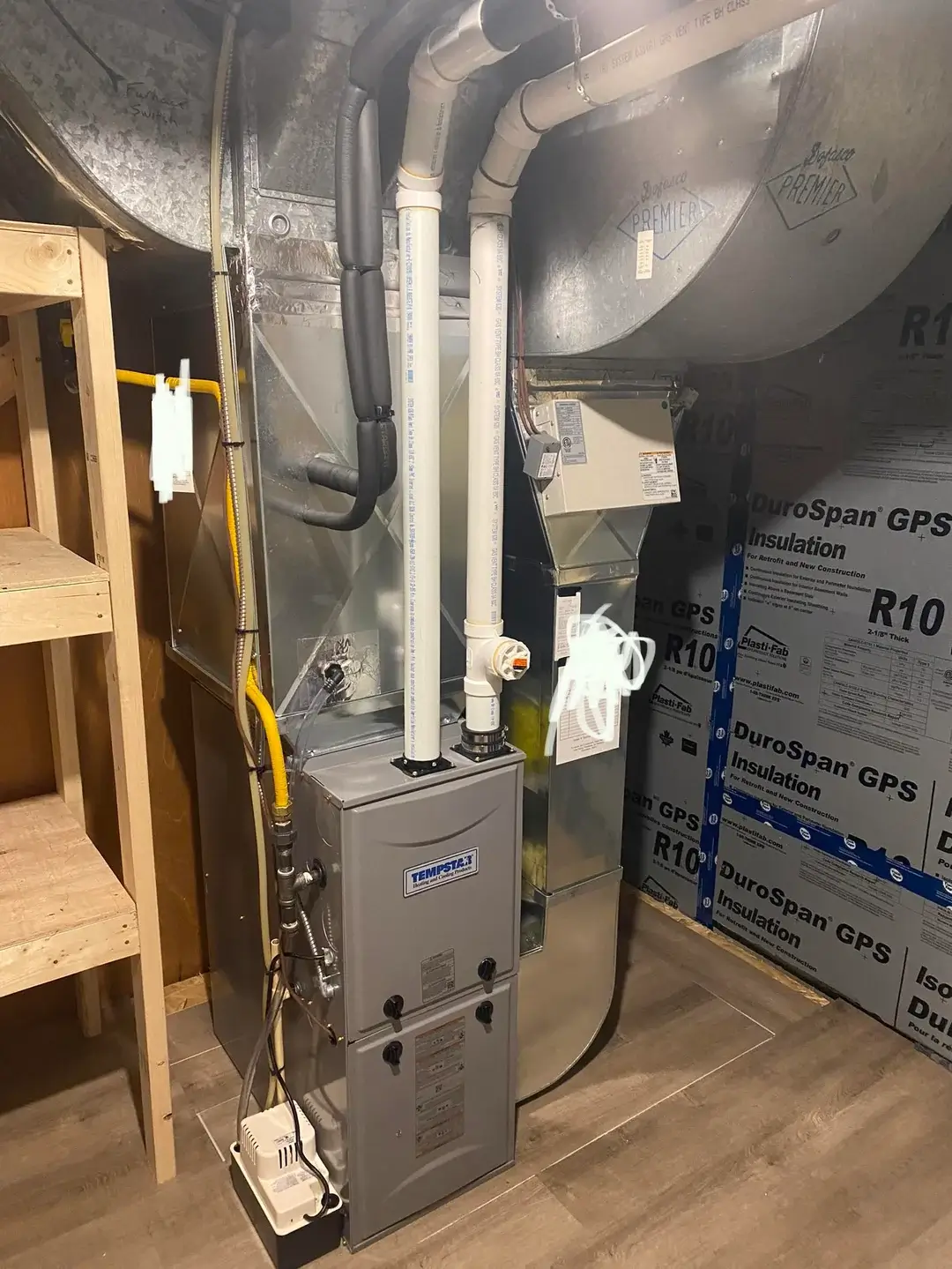Pairing an air source heat pump (ASHP) with underfloor heating can significantly enhance the efficiency and comfort of your home’s heating system.
This article explores the combination between ASHPs and underfloor heating, the installation process, retrofitting possibilities, and the benefits.
How Does it Work?

Air source heat pumps (ASHPs) extract thermal energy from the air, operating efficiently even in cold climates. They absorb heat from the outdoor environment and amplify it through compression before transferring it indoors for heating.
Underfloor heating systems distribute warmth evenly through pipes beneath the floor’s surface, maintaining consistent temperatures throughout living spaces.
Together, ASHPs and underfloor heating maximize energy efficiency. ASHPs operate optimally at lower temperatures. Alongside underfloor heating, heat loss is minimized as underfloor heating directly heat objects and the heat distribution is unaffected by normal air circulation.
ASHPs and underfloor heating also enhance comfort and aesthetics. The gentle warmth from the floor eliminates the need for bulky radiators, freeing up space and enhancing living areas’ appeal.
What is the Installation Process?
In new construction or extensive renovations, installing underfloor heating on the ground floor is typically straightforward, offering the chance to seamlessly integrate the system into the building design.
However, complexities can arise when considering upper floors or existing properties. Factors such as structural integrity, load-bearing capacities, and space limitations must be carefully evaluated.
Retrofitting underfloor heating presents additional challenges, including assessing ceiling heights and ensuring access to plumbing and electrical systems.
Effective insulation is essential to prevent heat loss and optimize efficiency, especially upward. It’s crucial to conduct a thorough structural assessment to ensure the floor can support the weight of the underfloor heating system and any additional loads from the ASHP.
Additionally, system design, including layout and zoning configurations, is necessary to achieve uniform heat distribution and precise temperature control throughout the space.
Can You Retrofit Underfloor Heating for a Heat Pump?

Retrofitting underfloor heating in existing properties poses significant challenges, particularly in homes with solid ground floors or limited installation space. While underfloor heating offers numerous benefits, such as even heat distribution and energy efficiency, it’s crucial to carefully evaluate the feasibility and cost-effectiveness of retrofitting.
Homes with solid ground floors may lack the necessary infrastructure to accommodate underfloor heating, requiring extensive modifications to install the system.
Additionally, limited space for installation can further complicate the retrofitting process, potentially increasing costs and logistical challenges.
Before proceeding with retrofitting, homeowners should consider alternative heating options, such as oversized radiators, which may provide efficient heating without the need for extensive modifications.
Assessing the overall feasibility and cost-effectiveness of retrofitting underfloor heating is essential to avoid unnecessary expenses and ensure the chosen heating solution meets the home’s heating requirements effectively.
Which Type of Underfloor Heating is Best?
Key considerations include room size, insulation levels, and available fuel type. Electric underfloor heating is favored for retrofitting into existing homes due to its ease of installation, while water underfloor heating is better suited for incorporation into new builds. [1]
Deciding between electric and water underfloor heating systems depends on several factors, tailored to individual property needs and homeowner preferences.
Electric underfloor heating operates by laying heating mats with embedded cables beneath the floor, typically atop a screed layer. This option is more cost-effective to purchase and simpler to install, making it a popular choice for smaller spaces like bathrooms.
However, its running costs are comparatively higher due to the lower efficiency of electricity compared to gas.
On the other hand, warm water underfloor heating, known as wet underfloor heating, employs flexible polyethylene pipes positioned beneath the floor surface.
It’s compatible with various fuel heating systems and it can be much more efficient when paired with a heat pump. While it entails higher initial expenses for purchase and installation, it offers long-term savings on running costs.
Benefits of Underfloor Heating with Heat Pumps
- Enhanced efficiency: ASHPs operate at lower temperatures, maximizing the efficiency of underfloor heating systems.
- Even heat distribution: Underfloor heating ensures consistent warmth throughout your home, eliminating cold spots common with traditional radiators.
- Reduced energy consumption: The combination of ASHPs and underfloor heating can lead to significant energy savings and lower utility bills.
- Environmental sustainability: By utilizing renewable energy sources and reducing carbon emissions, this heating solution contributes to a greener environment.
Related: Control Valve Technology
Conclusion
Installing an air-source heat pump with underfloor heating offers a sustainable and cost-effective solution for home heating. While challenges may arise during installation and retrofitting, the long-term benefits in terms of efficiency, comfort, and sustainability outweigh the initial hurdles.
By carefully planning and selecting the right system for your home, you can enjoy reliable and eco-friendly heating for years to come.
Read Next: When to Consider A Hybrid Heat Pump System



